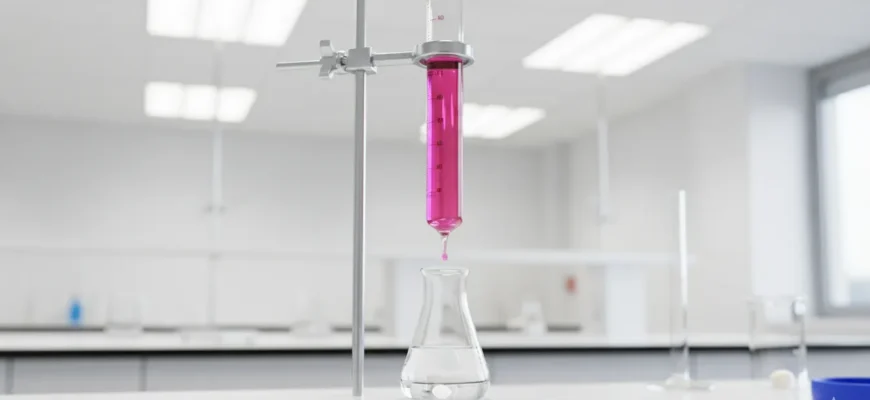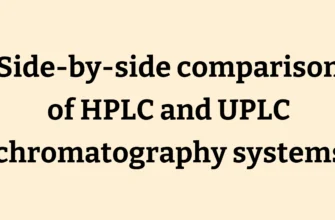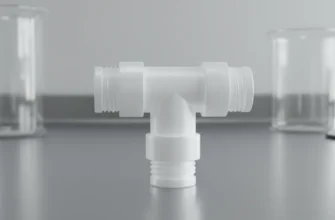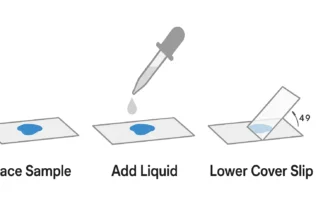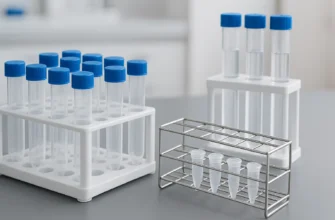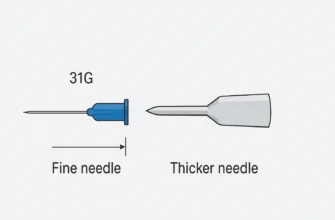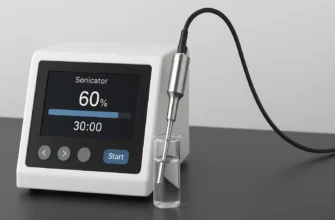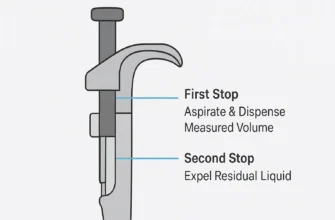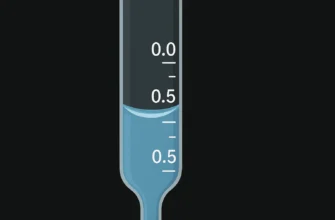Comprehensive Guide to Laboratory Burettes: Precision Volumetric Analysis in Analytical Chemistry
The Foundation of Precision in Analytical Chemistry
In analytical chemistry, where outcomes depend on measurement precision, the burette (also spelled buret) stands as an indispensable volumetric instrument. This sophisticated piece of laboratory glassware enables chemists to dispense liquids with exceptional accuracy, making it the cornerstone of quantitative analysis. The global laboratory equipment market, valued at USD 33.36 billion in 2024, is projected to reach USD 69.53 billion by 2034, reflecting the continued importance of precision instruments like burettes. This comprehensive guide examines every aspect of burette operation, from its fundamental anatomy to advanced techniques for achieving reliable, reproducible results in the laboratory.
What is a Burette? Definition and Fundamental Principles
A burette is a precisely calibrated piece of laboratory glassware designed specifically for controlled dispensing of variable liquid volumes. Unlike a pipette, which delivers fixed volumes, or graduated cylinders, which provide approximate measurements, the burette allows continuous, controlled addition of reagents until specific endpoints are reached. This capability makes burettes uniquely suited for titration processes and other analytical chemistry applications requiring incremental liquid addition.
The importance of accurate liquid measurement in analytical chemistry cannot be overstated. In quantitative analysis, determining unknown substance concentrations requires measurements of unparalleled precision. The burette’s design, featuring fine graduations and precise flow control through its stopcock valve, allows chemists to add solutions drop by drop, ensuring reaction endpoints are not exceeded. This level of control is critical for calculating molarity, purity, and other essential chemical properties.
The Anatomy of a Burette: Understanding Essential Components
The Graduated Glass Tube: Precision Measurement System
The main body of a burette consists of a long graduated glass tube marked with volumetric graduations. Modern burettes typically feature markings in milliliters (mL) with subdivisions of 0.1 mL, allowing readings to be estimated to ±0.05 mL or better. The graduations are inverted, with 0.00 mL at the top and maximum capacity (commonly 10, 25, 50, or 100 mL) at the bottom. This inverse numbering system accommodates the measurement-by-difference principle—subtracting initial readings from final readings to determine exact dispensed volumes.
High-quality burettes are manufactured from Borosilicate Glass, specifically Borosilicate Glass 3.3, which provides superior Chemical Resistance and thermal stability compared to standard glass. This material choice ensures consistent performance across diverse chemical applications and maintains traceable volumetric accuracy over extended use.
The Stopcock: Precision Flow Control Systems
The stopcock represents the critical control mechanism of any burette, enabling precise liquid flow regulation from steady streams to partial drops. Modern burettes employ two primary stopcock types:
Glass Key Stopcock: Traditional systems utilize carefully ground glass stopcocks requiring thin lubricant layers for proper sealing and smooth operation. While effective, these systems demand regular maintenance and can seize if not properly maintained.
PTFE Stopcock: Contemporary burettes predominantly feature Straight Bore PTFE Key Stopcock systems. These PTFE Stopcock designs are self-lubricating, eliminating grease requirements while preventing seizure and contamination issues. The chemical inertness of PTFE makes these stopcocks ideal for diverse chemical applications.
Rotaflo® Stopcocks: Specialized systems like Rotaflo® Stopcocks provide enhanced precision through dual-plug designs that help eliminate common titration errors.
The Burette Tip and Meniscus Reading
Below the stopcock, a narrow tip enables controlled droplet formation essential for precise endpoint determination. Properly functioning tips ensure clean drainage without external liquid adherence, preventing measurement errors.
When liquids occupy narrow glass tubes, surface tension creates curved surfaces called menisci. For aqueous solutions, menisci typically form concave curves. Accurate meniscus reading requires consistent measurement from the meniscus bottom, with eyes level to the liquid surface to avoid parallax error. Schellbach Glass Burette designs incorporate special white strips with central blue bands to enhance meniscus visibility and reading accuracy.
Types of Burettes: Selecting Appropriate Volumetric Instruments
Manual Glass Burettes: Laboratory Standards
Manual Glass Burettes remain the most common laboratory instruments, valued for reliability, simplicity, and direct user control. These instruments are available in different capacities and accuracy classifications:
Class A burettes meet the strictest tolerances defined by international standards including ISO 385 and ASTM E288, required for analytical work demanding highest precision. Class B burettes have wider tolerances suitable for general-purpose applications and educational settings.
Modern Class A TD Glass Buret Kits (TD = “to deliver”) are calibrated to deliver specified volumes with maximum permissible errors of ±0.01 mL for 10 mL capacity, ±0.03 mL for 25 mL capacity, and ±0.05 mL for 50 mL capacity burettes.
Digital Burettes: Advanced Volumetric Technology
Digital burettes represent significant technological advancement through plunger-based systems with digital displays providing direct dispensed volume readouts. These instruments eliminate meniscus reading errors while offering superior precision, excellent reproducibility, and programmable dispensing features. iTrite Electronic Digital Motorized Bottletop Burettes exemplify this technology, particularly valuable in high-throughput laboratories prioritizing speed and consistency.
Automatic and Specialized Burettes
Automatic Burets with Reservoir Fill Automatic Zero capabilities connect to titrant reservoir bottles, enabling simple refilling through rubber bulb compression or built-in pumps. These systems streamline operations while improving safety by minimizing chemical handling.
Specialized instruments include gas measuring burettes for measuring gas volumes evolved or consumed during chemical reactions, and piston burette systems for specific analytical applications.
Burette Standards and Specifications
International Standards Compliance
Modern burettes comply with ISO 385 international standards, which specify construction requirements, accuracy classes, and testing procedures. DIN 385 standards provide additional European specifications ensuring consistent quality and performance.
The standards define specific requirements including:
-
Class A accuracy tolerances for analytical applications
-
Class B specifications for general laboratory use
-
Construction materials and dimensional requirements
-
Calibration procedures and traceable volumetric accuracy verification
Calibration and Quality Assurance
Professional burettes undergo rigorous calibration processes ensuring accuracy class compliance. Calibration mark systems and calibrated to deliver specifications guarantee precise volume dispensing within specified tolerances. Regular recalibration maintains accuracy over time, supporting traceable volumetric accuracy requirements in accredited laboratories.
Mastering Burette Usage: Comprehensive Operational Procedures
Proper Setup and Installation
Successful titrations begin with proper burette installation. The instrument must be mounted perfectly vertical using a Burette Clamp securely attached to a stable ring stand or Support Stand. This prevents wobbling or tilting that could affect reading accuracy and procedural safety.
Cleaning and Preparation Protocols
Before use, burettes require thorough cleaning to ensure accurate measurements. Proper cleaning involves:
-
Initial washing with appropriate detergent and burette brush
-
Multiple rinses with tap water
-
Final rinses with deionized water or lab water
-
Verification of proper drainage without water beading on internal surfaces
Conditioning follows cleaning, involving two small-volume rinses with the actual titrant solution to remove residual water and prevent dilution effects.
Filling and Air Bubble Elimination
Proper filling technique prevents air bubbles that could compromise accuracy:
-
Close the stopcock completely
-
Use a funnel for safe titrant addition above the 0.00 mL mark
-
Check for air bubbles in the stopcock and tip
-
Open stopcock fully momentarily to expel trapped air
-
Adjust liquid level within the graduated scale
Volume Reading and Measurement Techniques
Accurate volume measurement requires systematic reading procedures:
-
Initial volume recording with meniscus bottom alignment
-
Consistent eye-level positioning to avoid parallax error
-
Final volume measurement after endpoint achievement
-
Volume calculation by subtraction (final – initial readings)
The Royal Society of Chemistry emphasizes that each burette reading carries inherent uncertainty, typically ±0.05 cm³, making meticulous technique essential for minimizing cumulative errors.
Advanced Burette Applications and Techniques
Titration Methodologies
Burettes enable various analytical processes including:
-
Acid-base titrations using indicators within appropriate pH range
-
Redox titrations employing chemical indicator systems
-
Complexometric titrations for metal ion determination
-
Precipitation titrations for halide analysis
Endpoint Detection and Chemical Indicators
Successful titrations depend on accurate endpoint identification through chemical indicator selection matching the expected pH range of the equivalence point. Common indicators include:
-
Phenolphthalein for strong acid-strong base titrations
-
Methyl orange for weak base-strong acid systems
-
Bromothymol blue for near-neutral equivalence points
Precision Techniques for Enhanced Accuracy
Advanced practitioners employ specialized techniques:
-
Partial drop addition near endpoints by forming droplets on the tip and washing into the reaction flask
-
Back-titration methods for difficult-to-titrate substances
-
Multiple titration averaging for improved statistical reliability
-
Temperature control for consistent volumetric accuracy
Quality Control and Maintenance
Daily Maintenance Protocols
Proper burette care involves:
-
Complete drainage after each use
-
Thorough cleaning with appropriate solvents
-
Multiple lab water rinses
-
Vertical storage in designated racks or clamps
-
Dust protection during extended storage periods
Stopcock Maintenance Procedures
PTFE Stopcock systems require minimal maintenance:
-
Regular cleaning to remove chemical residues
-
Proper tightening of retaining nuts to prevent leaks
-
Replacement of worn components as needed
Traditional Glass Key Stopcock systems demand more attention:
-
Regular grease removal and reapplication
-
Proper fitting verification
-
Cleaning of key and barrel components
Troubleshooting Common Issues
Inconsistent liquid delivery often indicates:
-
Partially clogged tips requiring careful cleaning
-
Insufficient burette cleanliness causing wall adherence
-
Stopcock leakage requiring maintenance or adjustment
Market Overview and Industry Standards
The measured volume burette set market, valued at USD 522.0 million in 2024, is projected to reach USD 716.6 million by 2030, growing at a CAGR of 5.4%. This growth reflects continued reliance on traditional volumetric methods alongside digital alternatives.
The laboratory glassware market, valued at USD 2.1 billion in 2024, is expected to reach USD 2.9 billion by 2034, driven by increased research activities and diagnostic laboratory expansion. The research and academics segment, worth USD 662.8 million in 2024, continues driving demand for precision instruments like burettes.
Historical Context and Development
The burette’s development represents a fascinating evolution in analytical chemistry. Étienne-Ossian Henry (1798-1873) invented the first true burette for titration in 1845. However, the modern burette design emerged through Karl Friedrich Mohr‘s innovations around 1855. Mohr redesigned existing instruments by adding rubber tubing with brass clips, enabling controlled dropwise delivery. His influential textbook “Lehrbuch der chemisch-analytischen Titrirmethode” (1855) established the modern titration methodology.
Leading Manufacturers and Quality Standards
Major Industry Players
DWK Life Sciences produces high-quality KIMBLE® KIMAX® burettes manufactured from superior borosilicate glass meeting ASTM E438 and USP Type I specifications. These instruments feature precise graduations, chemical-resistant construction, and reliable performance.
ChemScience INC, established in 2007, specializes in affordable, high-quality laboratory supplies across North America, including comprehensive volumetric glassware lines manufactured from Borosilicate Glass 3.3.
EISCO Burette products exemplify modern design principles, incorporating PTFE Stopcock technology, Class A accuracy specifications, and blue graduations for enhanced visibility.
Quality Certifications and Standards
Professional burettes meet stringent international standards:
-
ISO 385 compliance for construction and accuracy requirements
-
ASTM E288 specifications for volumetric tolerances
-
DIN 385 European standards for quality assurance
-
USP Type I glass standards for pharmaceutical applications
Conclusion
The burette exemplifies precision instrumentation in analytical chemistry, enabling accurate volumetric measurements essential for quantitative analysis. From Karl Friedrich Mohr‘s innovative designs to contemporary digital burette technology, these instruments continue evolving while maintaining fundamental principles of precision and reliability.
Modern burettes, whether traditional Glass Burettes with PTFE Stopcock systems or advanced digital burettes, provide the accuracy required for research, clinical diagnostics, and educational applications. Understanding proper techniques for setup, operation, maintenance, and troubleshooting ensures optimal performance and reliable results.
The projected growth of the laboratory equipment market to USD 69.53 billion by 2034 and the measured volume burette set market to USD 716.6 million by 2030 confirms the continued relevance of these foundational analytical instruments. Mastering burette operation remains essential for success in analytical chemistry, supporting accurate quantitative analysis across diverse scientific disciplines.
By combining traditional precision with modern materials and design improvements, today’s burettes maintain their position as indispensable tools for accurate liquid measurement and volumetric analysis in professional laboratories worldwide. Whether conducting routine titrations or advanced analytical processes, proper burette technique ensures reliable, reproducible results supporting scientific advancement and quality assurance across all chemical disciplines.

